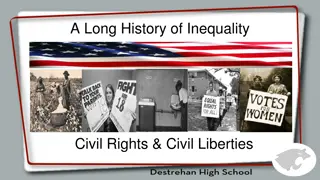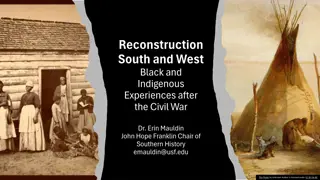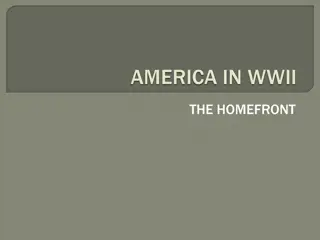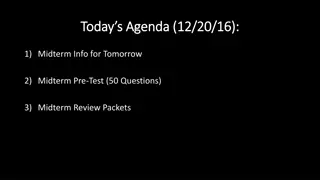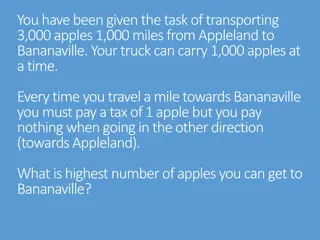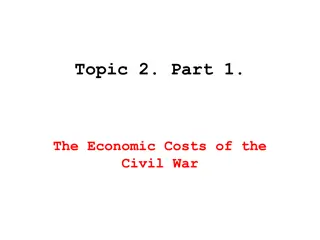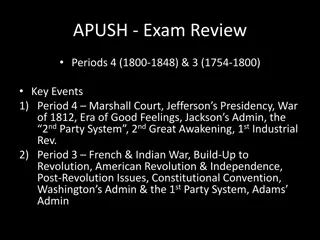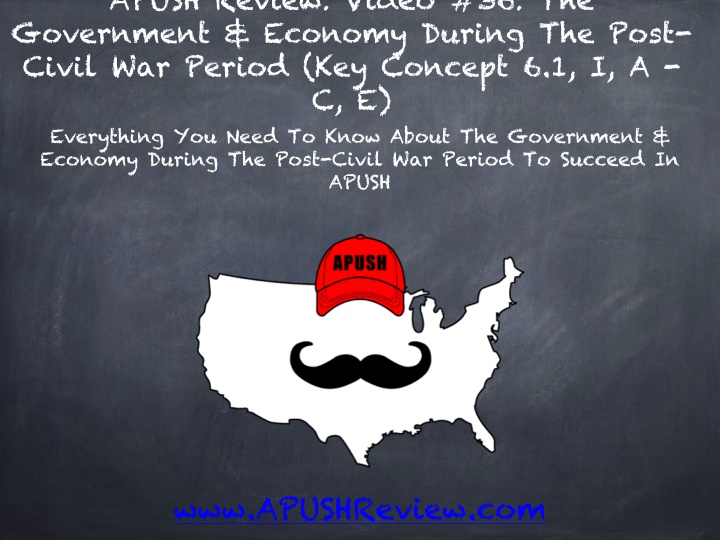
Government & Economy Post-Civil War: Key Concepts & Impacts
Explore the post-Civil War period's government and economy, from Homestead Act to Taylorism, and its impacts on production, wages, and living standards. Discover how businesses expanded globally.
Download Presentation

Please find below an Image/Link to download the presentation.
The content on the website is provided AS IS for your information and personal use only. It may not be sold, licensed, or shared on other websites without obtaining consent from the author. If you encounter any issues during the download, it is possible that the publisher has removed the file from their server.
You are allowed to download the files provided on this website for personal or commercial use, subject to the condition that they are used lawfully. All files are the property of their respective owners.
The content on the website is provided AS IS for your information and personal use only. It may not be sold, licensed, or shared on other websites without obtaining consent from the author.
E N D
Presentation Transcript
APUSH Review: Video #36: The Government & Economy During The Post- Civil War Period (Key Concept 6.1, I, A - C, E) Everything You Need To Know About The Government & Economy During The Post-Civil War Period To Succeed In APUSH www.APUSHReview.com
Government & The Economy DURING the Civil War Homestead Act (1862): Open to any adult who never took up arms against the United States Gave 160 acres of land free to anyone that lived on the land for 5 years Morrill Land Grant Act (1862): Encouraged states to use $ from land sales to support agricultural and technical colleges Cornell University in NY
Government & The Economy DURING the Civil War Government provided $ and land for construction of RRs Pacific Railway Act (1862): Provided for the construction of a Northern transcontinental RR and telegraph line to link California with the East May, 1869, the transcontinental RR was complete Impact of subsidies? Growth of farms, cities, and lumber industry
Causes Of Increased Production Of Goods By Businesses Technological advances: Taylorism - Frederick Taylor - focused on improving efficiency - timed tasks, specific tasks for workers Greater access to natural resources Lumber out west Redesigned financial and management structures Monopolies - businesses sought to have sole control over an industry Marketing advances Mail order catalogs - Sears Growing labor force Large supply of workers, including immigrants
Impacts Of This Growing Economy? Price of goods decreased Larger supply of goods, cheaper production Increase in workers wages More $ for workers to spend Increased standard of living New access to goods and services Sewing machines, sporting equipment, household items However, there was a growing gap between the rich and poor
Looking Outside The US Businesses sought markets and resources in other areas of the world Pacific Rim: Hawaii - calls for annexation in the 1890s (sugar plantations) Asia: Philippines - gained in 1898 (Spanish- American War) Open Door policy (1899) US sought to trade freely with China China was divided into Spheres of Influence - US was afraid of being left out
Looking Outside The US Latin America: Big Brother Policy - James G. Blaine, 1890s US hoped to open up markets for businesses in Latin America
Quick Recap How did the government encourage expansion? Causes of increased production: Technological innovations, Financial and management structures, Marketing, Growing labor force Impacts of growing economy? Price of goods decreased, Wages increased, New access to goods, Growing gap between rich and poor Why and where did businesses look outside the US? Asia, Pacific Rim, Latin America
See You Back Here For Video #37: Laissez-faire, The Industrial Workforce, And The New South (Key Concept 6.1, II, A - B, D) Thanks for watching Best of luck!

![❤[PDF]⚡ Civil War Talks: Further Reminiscences of George S. Bernard and His Fel](/thumb/20551/pdf-civil-war-talks-further-reminiscences-of-george-s-bernard-and-his-fel.jpg)
